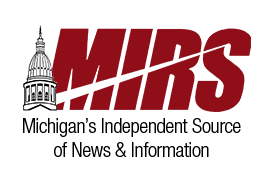(Source: MIRS.news, Published 11/29/2022) The Michigan Department of Education has found 112 more schools throughout 54 school districts that will need to partner with the state to improve academics because of low scores or graduation rates, bringing the number to 255.
Officials released a list of the schools, which includes 36 new charter schools, that scored in the bottom 5% of the state index accountability system or have a four-year graduation rate of 67% or lower. Wayne County has the largest number of added schools with 48, followed by Ingham County with 10 schools.
“What we’re experiencing is the consequence of underfunding Michigan public school students, educators, and education for many years, the resultant teacher shortage, and a once-in-a-century pandemic,” State Superintendent Michael RICE said.
Great Lakes Education Project Executive Director Beth DeShone said the number of districts needing help has risen over the past four years, which was the reason she wanted to see Let MI Kids Learn passed by the Legislature. The initiative would allow taxpayers to write off donations to private school scholarships on their income taxes.
However, the petitions have not been canvassed by the Bureau of Elections, which had been working on getting midterm elections certified. The petition deadline for canvass isn’t due until 2024.
“Now’s not the time for politics. Our children are in crisis. It’s time to end the delays and send the Let MI Kids Learn reform to lawmakers to approve today,” DeShone said.
Michigan Alliance for Student Opportunity Executive Director Peter Spadafore agreed with Rice in saying the reason was the COVID-19 pandemic and systemic underfunding of public schools.
“While the results of the School Accountability Reports reveal nothing surprising, recent historic investments from Gov. Gretchen Whitmer and state lawmakers are helping to ensure our schools have the resources necessary to get students back on track,” Spadafore said.
The education department is required to run a federal school accountability system every year since the passage of the Elementary and Secondary Education Act in 1965. The federal government waived that requirement during the COVID-19 pandemic and the 2021-2022 school year was the first year since that data has been collected.
Low-performing schools fall into one of three categories: Schools that need comprehensive support and improvement, which are the lowest performing schools; schools that need additional targeted support, which have one or more student groups in the bottom 25% and one or more subgroup in the bottom 5%; and targeted support and improvement, which is a school with at least one student group performing in the bottom 25% of every subject checked by the index.
The lowest performing schools went from 162 in 2016-17 to 255 in 2021-22. In 2017-18 there were 68 schools on the additional support list and that rose to 68 in 2021-22. In 2018-19 there were 63 schools on the targeted support list and that jumped to 138.
“We are committed to providing help and support to schools that have struggled the most over the past two years. It will take extraordinary work at the local, regional, and state levels to get all students on positive educational paths as we come out of the pandemic. It is imperative that educators and non-educators alike act with the requisite urgency,” Rice said.

